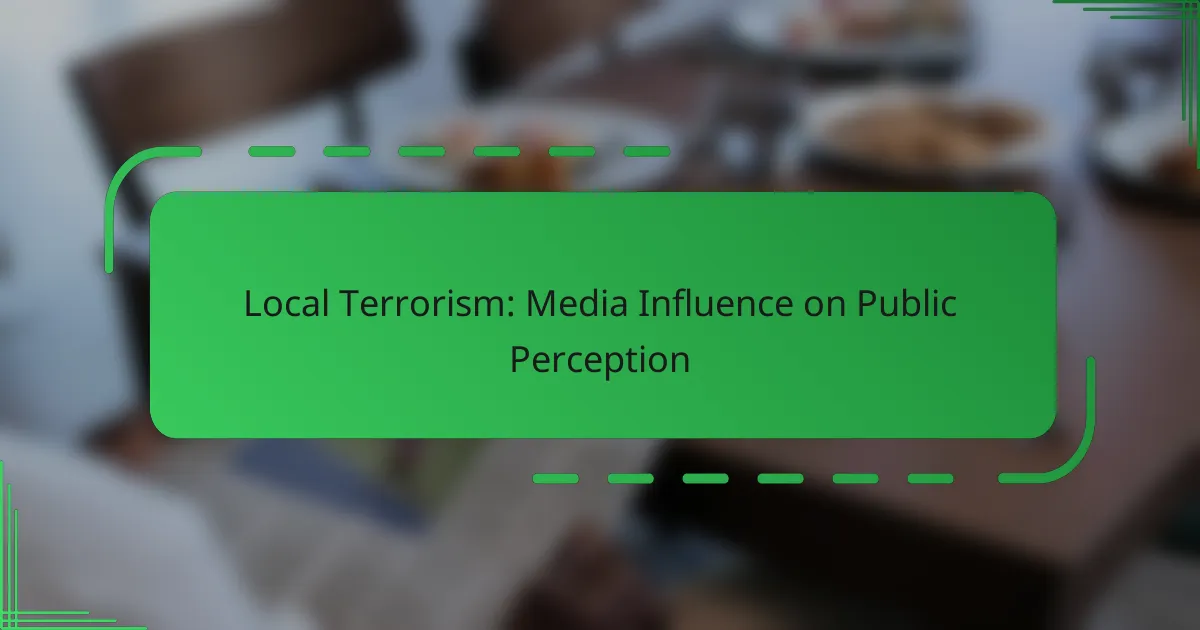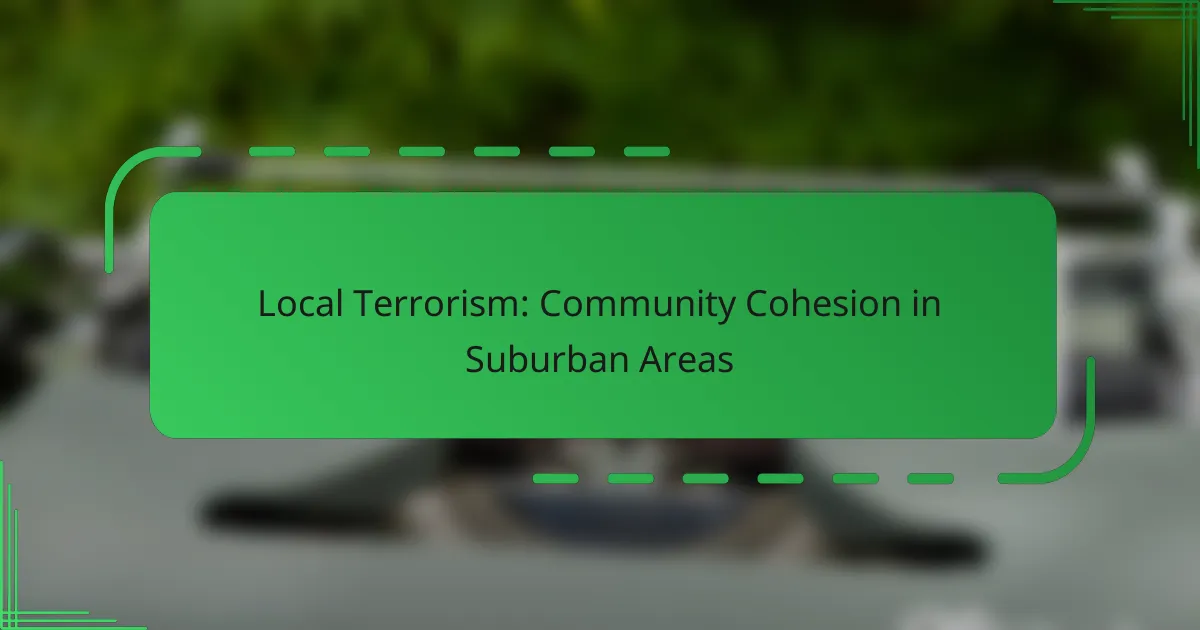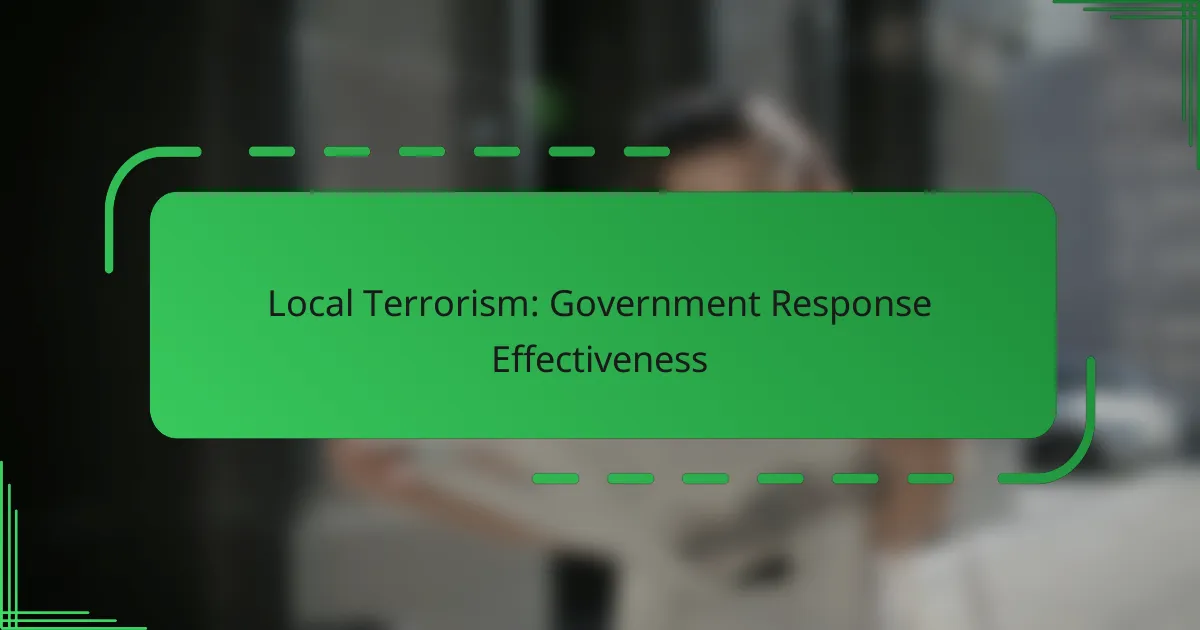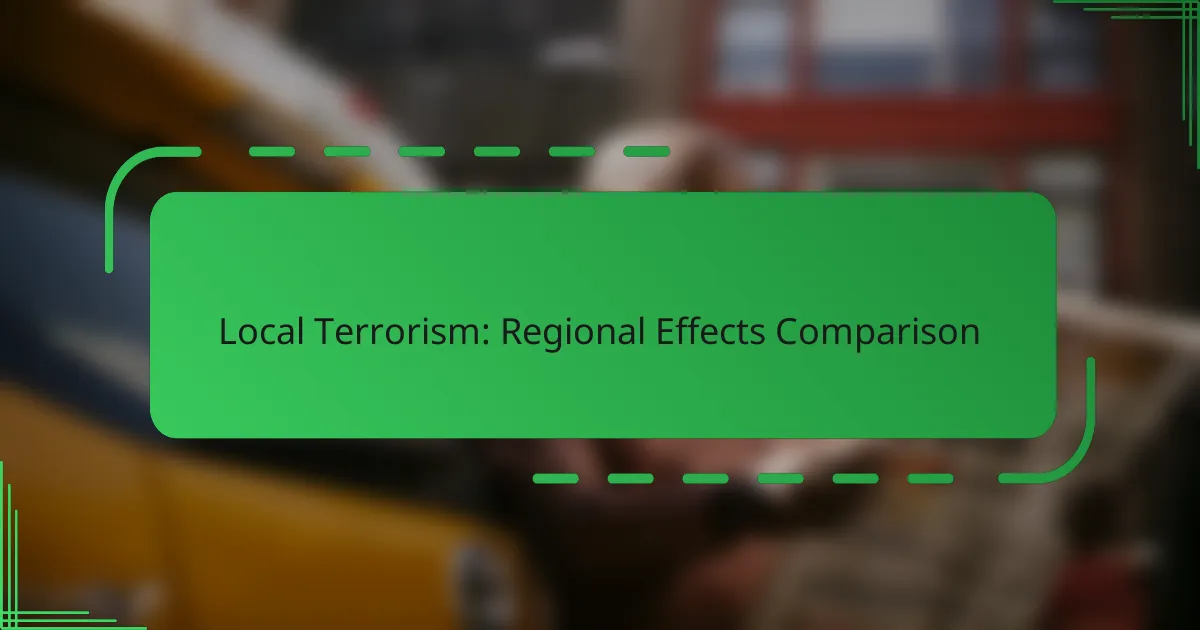The media plays a crucial role in shaping public perception of local terrorism by framing incidents and emphasizing specific narratives. This coverage not only influences how communities perceive the threat but also affects their emotional responses, often leading to increased anxiety and altered feelings of safety. Understanding the media’s impact is essential for fostering resilience and promoting informed responses within communities.

How does media shape public perception of local terrorism?
The media significantly influences public perception of local terrorism by framing incidents and highlighting certain narratives. This coverage can shape how communities understand the threat of terrorism and their emotional responses to it.
Framing of local terrorism incidents
Framing refers to how media outlets present and contextualize terrorism events, which can affect public interpretation. For instance, portraying an incident as a random act of violence versus a targeted attack can lead to different public reactions and levels of concern.
Media framing often emphasizes specific aspects, such as the identity of the perpetrators or the impact on the community, which can reinforce stereotypes or fears. This selective focus can shape the narrative around local terrorism, influencing how individuals perceive their safety and the motives behind such acts.
Impact of sensationalism on fear levels
Sensationalism in media coverage can escalate public fear regarding local terrorism. When news outlets prioritize shocking details or dramatic visuals, it can lead to heightened anxiety and a perception that terrorism is more prevalent than it actually is.
This fear can result in community overreactions, such as increased security measures or social division. Understanding the difference between sensationalized reporting and factual information is crucial for the public to maintain a balanced view of local terrorism risks.
Role of social media in information dissemination
Social media plays a pivotal role in how information about local terrorism is shared and consumed. Platforms like Twitter and Facebook enable rapid dissemination of news, often leading to real-time updates that can amplify both accurate information and misinformation.
The viral nature of social media can create echo chambers where fear and panic spread quickly, sometimes outpacing traditional media. Users should critically evaluate sources and verify information to avoid contributing to the spread of panic or false narratives surrounding local terrorism incidents.
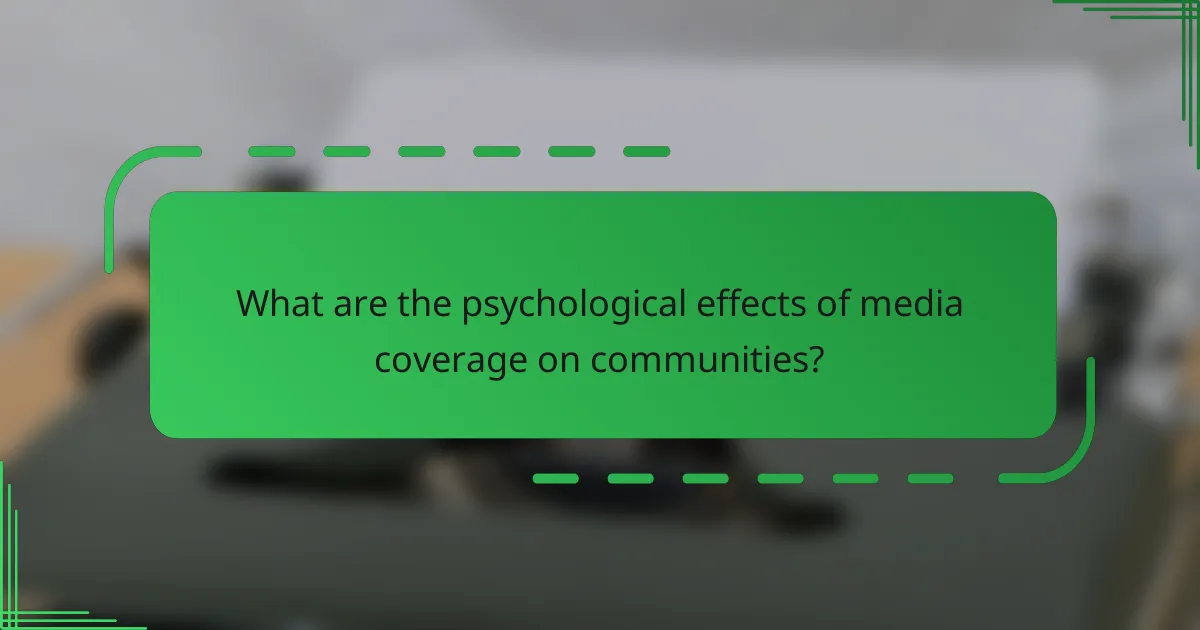
What are the psychological effects of media coverage on communities?
Media coverage of terrorism can significantly impact the psychological state of communities, often leading to heightened anxiety and altered perceptions of safety. The way events are reported shapes public understanding and emotional responses, which can have lasting effects on community dynamics.
Increased anxiety and fear among residents
Intense media coverage of terrorist incidents can create a pervasive sense of fear and anxiety within communities. Residents may feel that they are at a greater risk of becoming victims, even if statistical evidence suggests otherwise. This heightened anxiety can lead to changes in daily behavior, such as avoiding public spaces or participating in community events.
For example, after a high-profile attack, surveys often indicate that a significant portion of the population reports feeling unsafe in their neighborhoods. This fear can be exacerbated by sensationalized reporting, which tends to focus on the most dramatic aspects of an event rather than providing a balanced perspective.
Desensitization to violence
Frequent exposure to violent imagery and narratives in the media can lead to desensitization among community members. Over time, individuals may become numb to the severity of violence, which can diminish their emotional responses to real-life events. This desensitization can result in a lack of empathy for victims and a diminished sense of urgency in addressing community safety.
Moreover, when violence is portrayed as a common occurrence, it can normalize aggressive behavior, leading individuals to perceive such actions as less shocking or unacceptable. Communities may then struggle to mobilize against violence, as the repeated exposure can create a false sense of inevitability regarding such incidents.
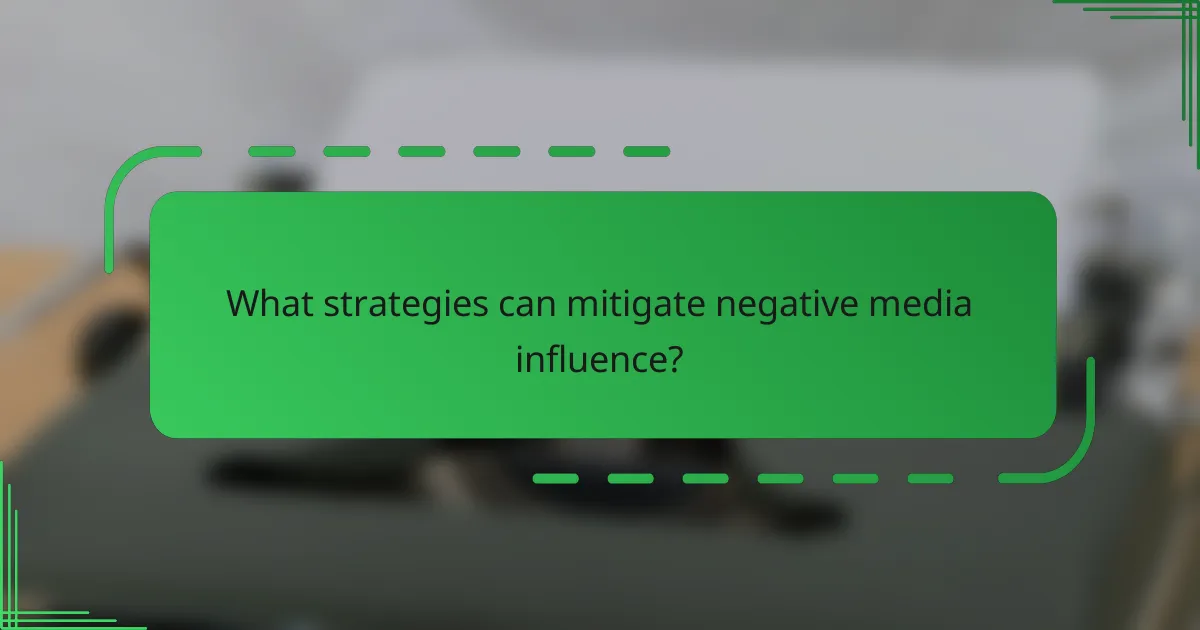
What strategies can mitigate negative media influence?
To mitigate negative media influence, strategies should focus on fostering community resilience, enhancing media literacy, and promoting collaboration with local news outlets. These approaches can help shape public perception positively and reduce the impact of sensationalized reporting on local terrorism.
Community engagement initiatives
Community engagement initiatives involve actively involving local residents in discussions about terrorism and its portrayal in the media. These programs can include town hall meetings, workshops, and forums where community members can express their concerns and share their experiences.
By creating a platform for dialogue, communities can build trust and understanding, which helps counteract fear and misinformation. For example, initiatives that encourage storytelling can empower individuals to share personal narratives that humanize the issues surrounding terrorism.
Media literacy programs
Media literacy programs equip individuals with the skills to critically analyze news content, particularly regarding sensitive topics like terrorism. These programs teach participants how to identify bias, recognize sensationalism, and evaluate sources for credibility.
Implementing media literacy in schools or community centers can significantly enhance public understanding. Workshops that focus on practical skills, such as fact-checking and discerning reliable information, can help individuals navigate the media landscape more effectively.
Collaboration with local news outlets
Collaboration with local news outlets can ensure that reporting on terrorism is responsible and accurate. Establishing partnerships between community leaders and journalists can lead to more nuanced coverage that reflects the community’s values and concerns.
These collaborations can include joint training sessions for reporters on cultural sensitivity and the potential impact of their stories. By fostering a mutual understanding, local media can contribute to a more informed public and help mitigate the fear often associated with terrorism reporting.
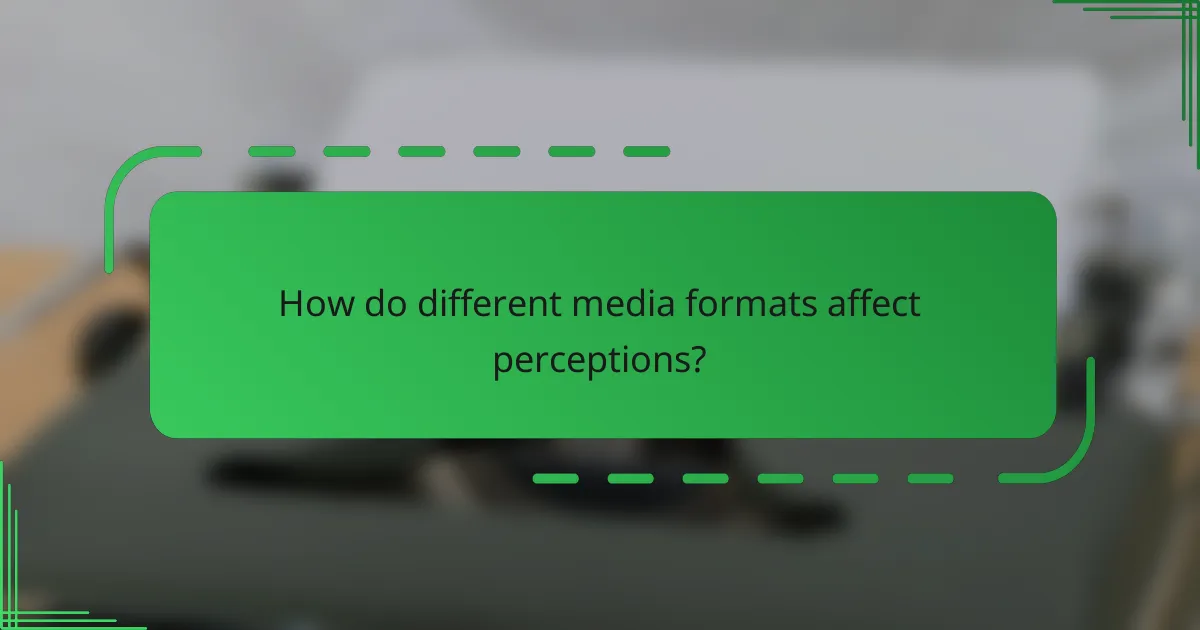
How do different media formats affect perceptions?
Different media formats significantly shape public perceptions of local terrorism by influencing how information is presented and consumed. Television often provides immediate visuals and emotional narratives, while online news allows for more in-depth analysis and user interaction.
Television vs. online news coverage
Television news coverage tends to focus on breaking events, using dramatic visuals and sound bites to capture viewer attention quickly. This format can create a sense of urgency and fear, often leading to heightened emotional responses from the audience.
In contrast, online news platforms offer the opportunity for deeper exploration of topics, including background information and expert opinions. Readers can engage with multiple sources, which may lead to a more nuanced understanding of terrorism-related issues.
Influence of podcasts and documentaries
Podcasts and documentaries provide a platform for detailed storytelling and analysis, allowing for a more comprehensive exploration of terrorism’s causes and effects. These formats often feature interviews with experts and firsthand accounts, which can humanize complex issues and foster empathy.
Listeners and viewers are encouraged to reflect on the content, which can lead to shifts in perception over time. However, the quality and bias of the content can vary widely, making it essential for audiences to critically evaluate sources for credibility and balance.

What role do government and law enforcement play in media narratives?
Government and law enforcement agencies significantly shape media narratives through their communications and interactions with the press. Their press releases and official statements often set the tone for public discourse, influencing how events are perceived and understood by the public.
Press releases and official statements
Press releases and official statements are primary tools used by government and law enforcement to communicate with the media and the public. These documents provide factual information about incidents, updates on investigations, and guidance on safety measures. For example, after a local terrorism incident, a police department might issue a press release detailing the event and outlining steps being taken to ensure community safety.
These communications can also help mitigate misinformation by providing clear, authoritative information. However, the timing and content of these releases can greatly affect public perception, as delays or vague statements may lead to speculation and fear.
Media partnerships for public safety
Collaboration between government agencies and media outlets can enhance public safety by disseminating critical information quickly and effectively. These partnerships often involve joint initiatives, such as public service announcements or community awareness campaigns, aimed at educating the public on safety protocols and emergency responses.
For instance, during heightened security alerts, law enforcement may work with local news stations to broadcast real-time updates and safety tips. This proactive approach not only informs the public but also fosters trust between the community and authorities, which is essential in managing public perception during crises.
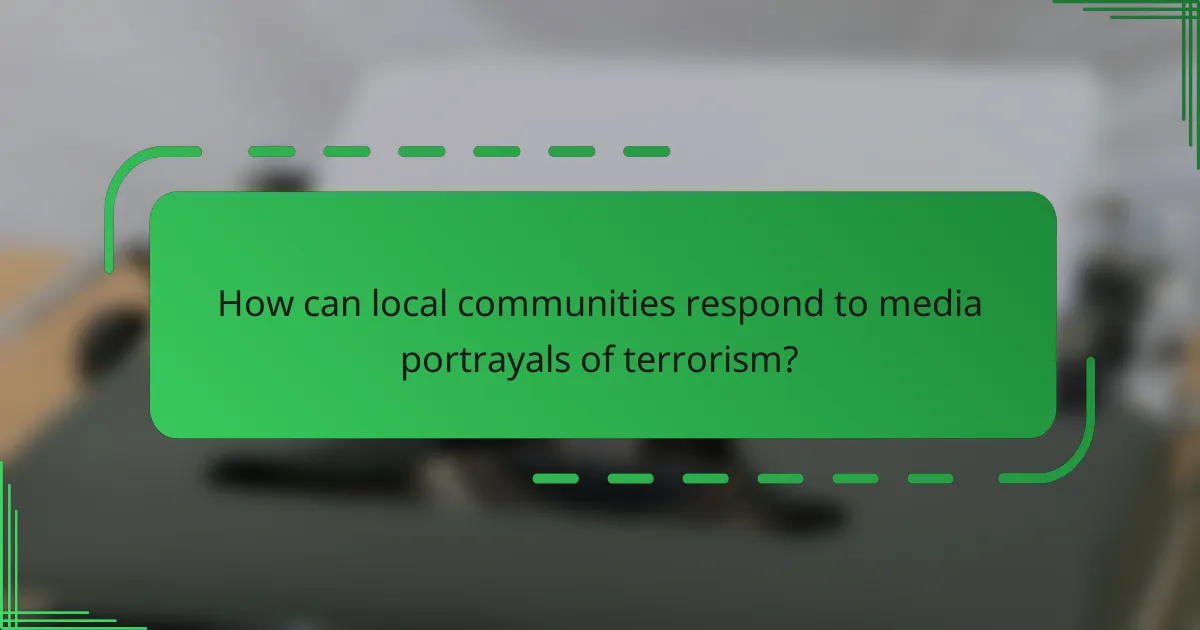
How can local communities respond to media portrayals of terrorism?
Local communities can respond to media portrayals of terrorism by actively engaging in dialogue and creating counter-narratives that emphasize resilience and unity. This proactive approach helps to mitigate fear and misunderstanding, fostering a more informed public perception.
Grassroots movements for positive narratives
Grassroots movements play a crucial role in shaping positive narratives around terrorism. These initiatives often involve community members coming together to share stories of resilience, solidarity, and hope, countering negative media portrayals. For example, local organizations may host events that highlight community strength and diversity, showcasing how residents support one another in times of crisis.
To effectively create positive narratives, communities should focus on collaboration with local media outlets. Building relationships with journalists can help ensure that stories of recovery and community support are highlighted, rather than solely focusing on incidents of violence. Engaging in social media campaigns can also amplify these messages, reaching a broader audience.
Support networks for affected individuals
Establishing support networks for individuals affected by terrorism is vital for community healing and resilience. These networks can include counseling services, peer support groups, and community outreach programs that provide resources and assistance to those in need. Local governments and non-profits can collaborate to create accessible support systems that cater to various demographics.
Communities should prioritize inclusivity in their support networks, ensuring that services are available in multiple languages and culturally sensitive. Regular workshops and informational sessions can help individuals understand their rights and available resources, fostering a sense of empowerment and belonging. Additionally, connecting affected individuals with local mental health professionals can provide essential emotional support during recovery.
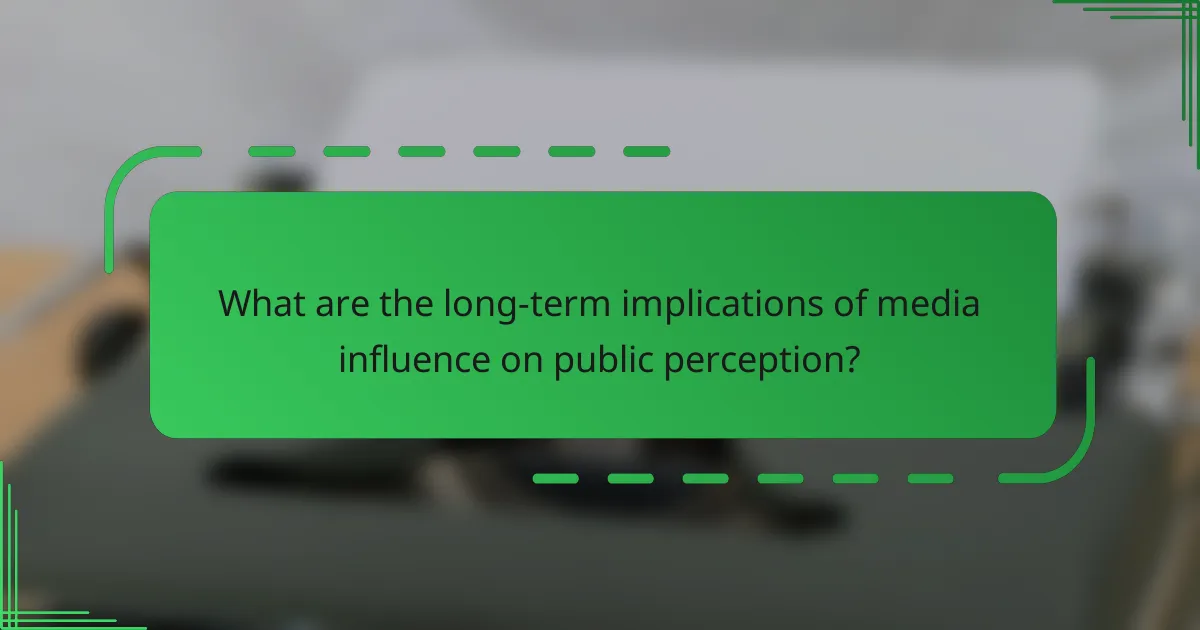
What are the long-term implications of media influence on public perception?
The long-term implications of media influence on public perception include significant shifts in societal attitudes towards terrorism, which can lead to changes in policy and law enforcement practices, as well as alterations in community trust and cohesion. Over time, these shifts can shape the overall landscape of security and social dynamics within affected areas.
Shifts in policy and law enforcement practices
Media coverage can drive policymakers to respond to perceived threats with stricter laws and enhanced law enforcement measures. For instance, following high-profile terrorist incidents, governments may implement surveillance programs or increase funding for counter-terrorism units, often justified by public demand for safety.
These shifts can lead to a more militarized police presence in communities, which may be seen as necessary by some but can also foster resentment and fear among residents. Balancing security needs with civil liberties is a critical consideration for lawmakers.
Changes in community trust and cohesion
Media portrayal of terrorism can erode trust within communities, particularly if certain groups are unfairly stigmatized. When media narratives emphasize fear and division, they can create an atmosphere of suspicion, leading to social fragmentation and decreased community cohesion.
Conversely, responsible media coverage that highlights community resilience and cooperation can foster solidarity. Initiatives that encourage dialogue and understanding among diverse groups are essential to rebuilding trust and promoting a united front against extremism.
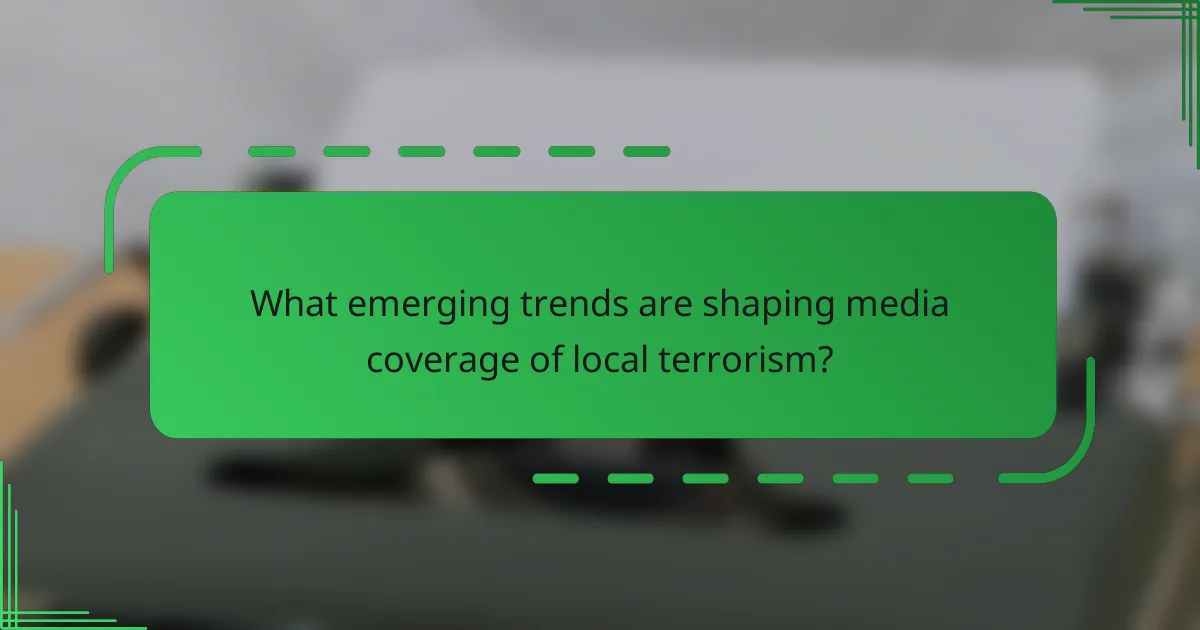
What emerging trends are shaping media coverage of local terrorism?
Emerging trends in media coverage of local terrorism include the rise of social media as a primary news source, the focus on sensationalism, and the increasing use of data journalism. These trends significantly influence public perception and understanding of terrorism incidents.
Increased reliance on social media platforms
Social media platforms like Twitter and Facebook have become essential for real-time updates on local terrorism events. News outlets often source information from these platforms, which can lead to the rapid spread of unverified information. This reliance can create confusion and amplify fear among the public.
As a result, it is crucial for consumers of news to verify information from multiple sources before forming opinions or sharing content. Engaging with reputable news organizations can help mitigate the risks of misinformation.
Focus on sensationalism and emotional narratives
Media coverage often emphasizes sensational stories and emotional narratives to attract viewers and readers. This approach can skew public perception, making terrorism appear more prevalent than it is. Such coverage may lead to heightened anxiety and a distorted understanding of the actual risks involved.
To counteract this trend, audiences should seek balanced reporting that includes context and factual data. Understanding the broader landscape of terrorism can help individuals maintain a rational perspective on local incidents.
Emergence of data journalism
Data journalism is increasingly used to analyze and present information about local terrorism incidents. This trend allows for a more nuanced understanding of patterns and trends, moving beyond sensational headlines. By utilizing statistics and visualizations, data journalism can provide insights into the frequency and nature of local terrorism.
Consumers should look for articles that incorporate data analysis to gain a clearer picture of terrorism trends. This approach can help demystify the issue and encourage informed discussions about safety and security in local communities.
